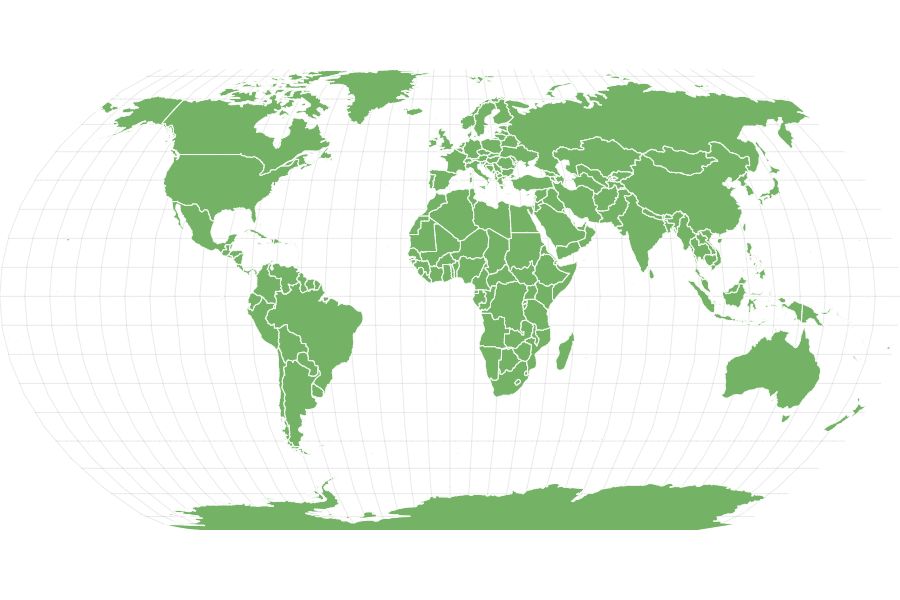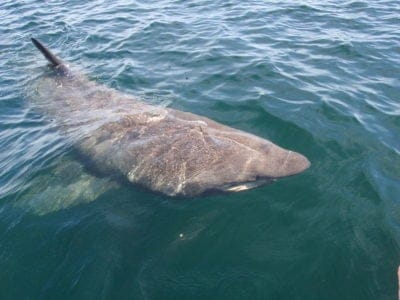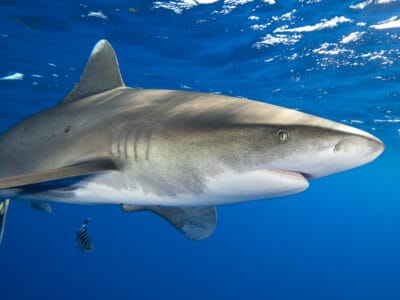Shark
No shark species has any bones in their bodies
Advertisement
Shark Scientific Classification
Read our Complete Guide to Classification of Animals.
Shark Conservation Status
Shark Facts
- Prey
- Sea lion, seals, humans, small fishes, and invertebrates
- Fun Fact
- No shark species has any bones in their bodies
- Biggest Threat
- Killer whales, sperm whales and humans
- Gestation Period
- Two years
- Diet
- Carnivore
- Favorite Food
- Sea lion, seals, humans, small fishes, and invertebrates
- Type
- Fish
- Common Name
- Shark
- Location
- USA and Australian waters mostly
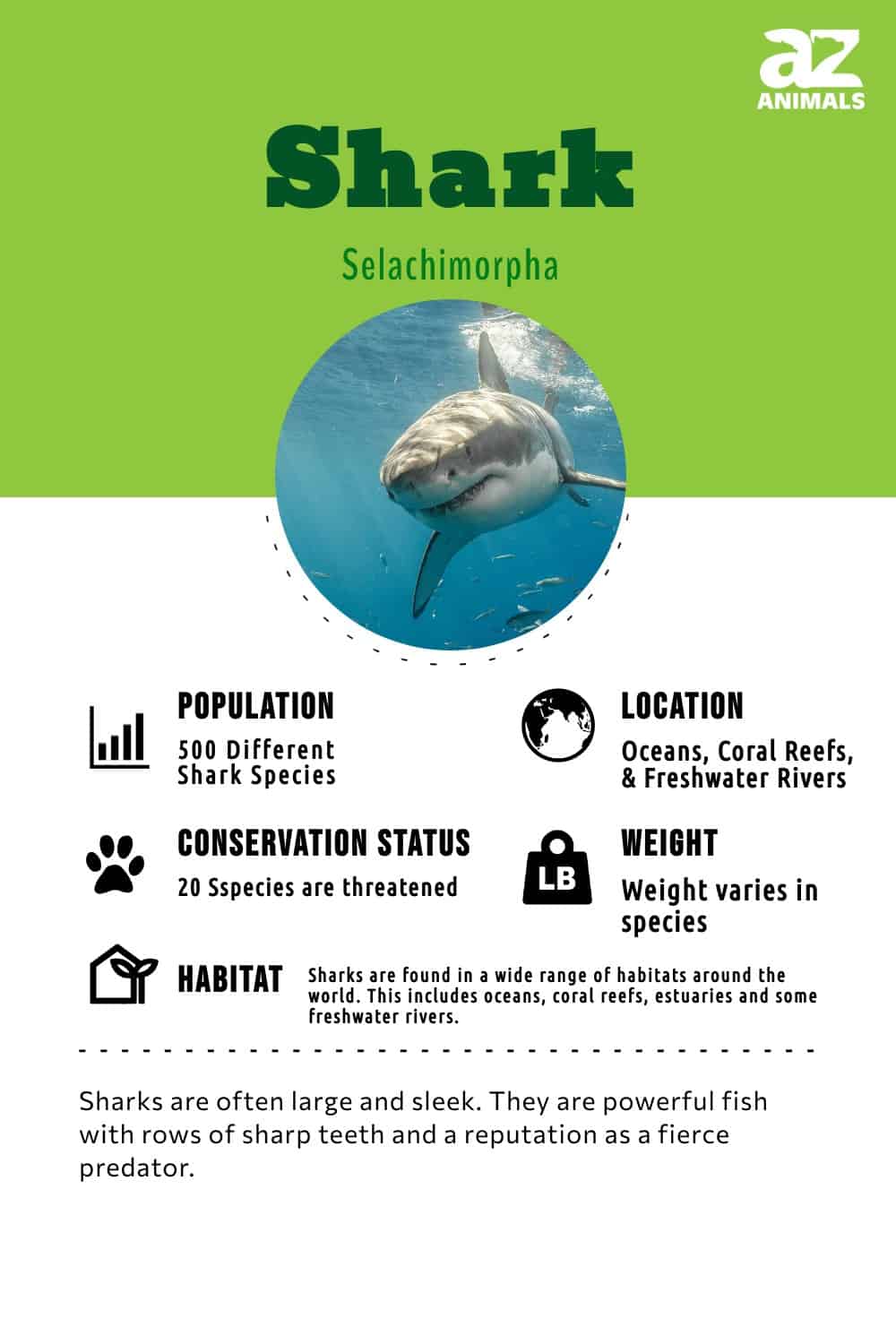
Sharks are known especially for their cartilaginous skeleton.
Sharks make up a family of elasmobranch fishes. They also have about five to seven slits at the side of their head for their gills. Their pectoral fins are not fused to their heads.
Experts believe that there are about 500 species that form about 14 to 30 shark families. Some of the common species include salmon, tiger, great white, whale, and bull sharks.
Incredible Shark Facts!
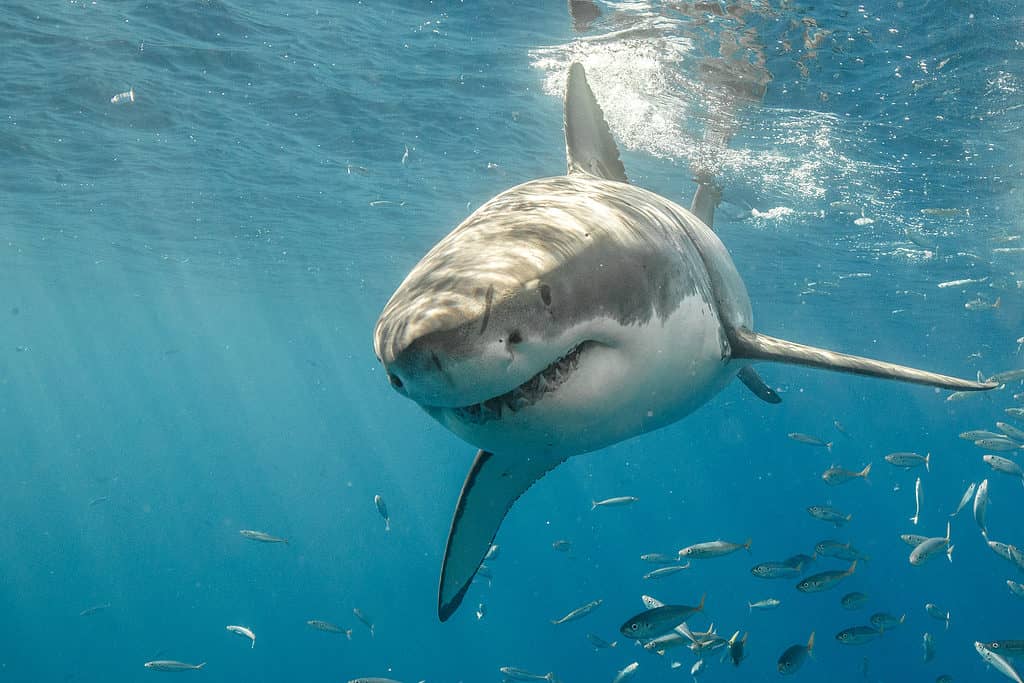
Great white sharks are the ocean’s apex predators.
©iStock.com/ShaneMyersPhoto
- Boneless creatures: Sharks are fish that do not have any bones at all. Instead, their body is primarily made of cartilage instead, which is the same material that the human nose and ears are made from.
- Good eyesight: They have pretty good eyesight which means that they can also see clearly in dim-lighted areas.
- Sandpaper texture: The skin of these fishes often feels like sandpaper. This is because their skin has small teeth-like structures.
- Immobility trance: These fishes can become immobile when flipped upside down.
- Ancient fishes: Sharks are ancient fish and scientists believe that these fishes have been around for more than 450 million years ago.
- Land sharks: One species of shark — the epaulette shark — has evolved the ability to walk on land over small distances!
- Sixth Sense: Sharks have long been thought to have a sixth sense.
Evolution and Origins
Sharks are some of the most ancient groups of fish species on the planet. They have a rich history that dates back over 400 million years ago. They belong to the class of Chrondrichhyes. This class also includes sting rays chimeras. These types of animals are characterized by their cartilaginous skeletons. They have five to seven gills and they do not have a swim bladder.
The earliest known shark appeared in the oceans during the Silurian period. This was about 420 million years ago. These primitive sharks were small and had dorsal fins covered in very shark scales.
Over time, sharks have evolved to become more diverse and complex beings. This includes their different body shapes and diets. Some important evolutionary sharks include the great white and the mako shark.
Classification and Scientific Name
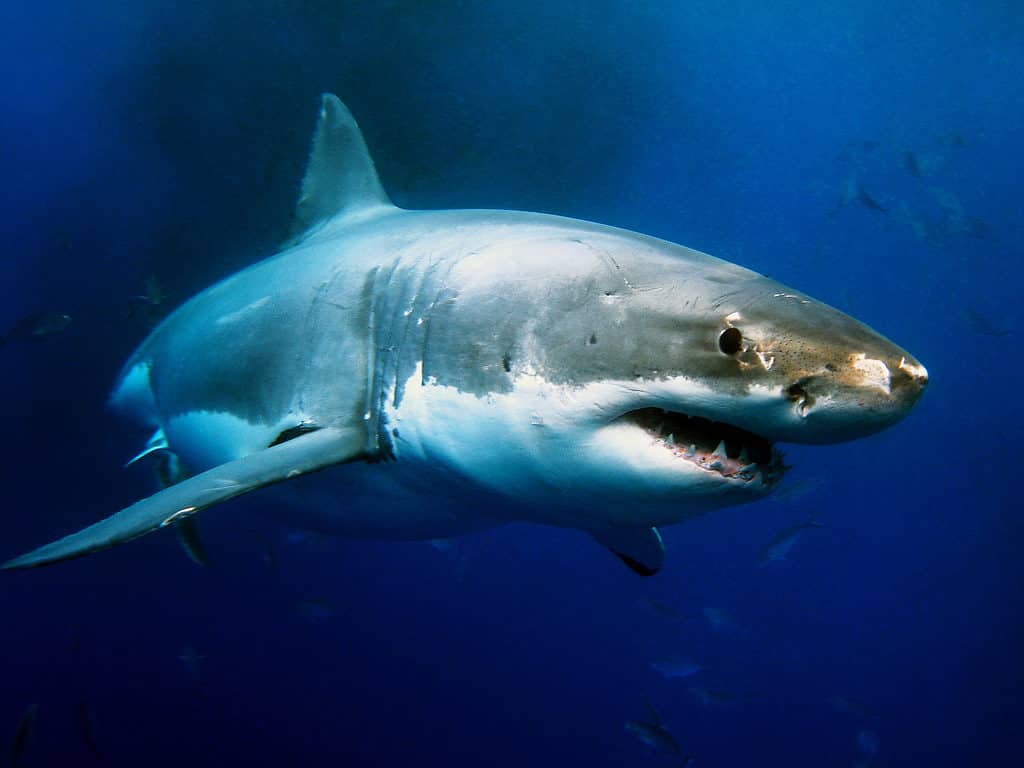
Great white sharks are the ocean’s apex predators.
©iStock.com/Whitepointer
These fishes go by the scientific name Selachimorpha. These fishes belong to the kingdom Animalia and phylum Chordata. Their class is on Chondrichthyes.
Selachimorpha comes from a combination of Ancient Greek words – sélakhos and the suffix -morpha. Sélakhos means “cartilaginous fish.” However, the word can be broken down even further to the root “sélas,” which means “light” or “glow.” These pre-Greek origins are likely due to the phosphorescent light that some of these sharks have.
Beneath the Selachimorpha superorder, there are 8 orders that are still alive, which include squatiniformes, pristiophoriformes, squaliformes, carcharhiniformes, lamniformes, orectolobiformes, heterodontiformes, and hexanchiformes. Four orders of these fishes have gone extinct, but there are still over 470 different species alive today.
Different Species
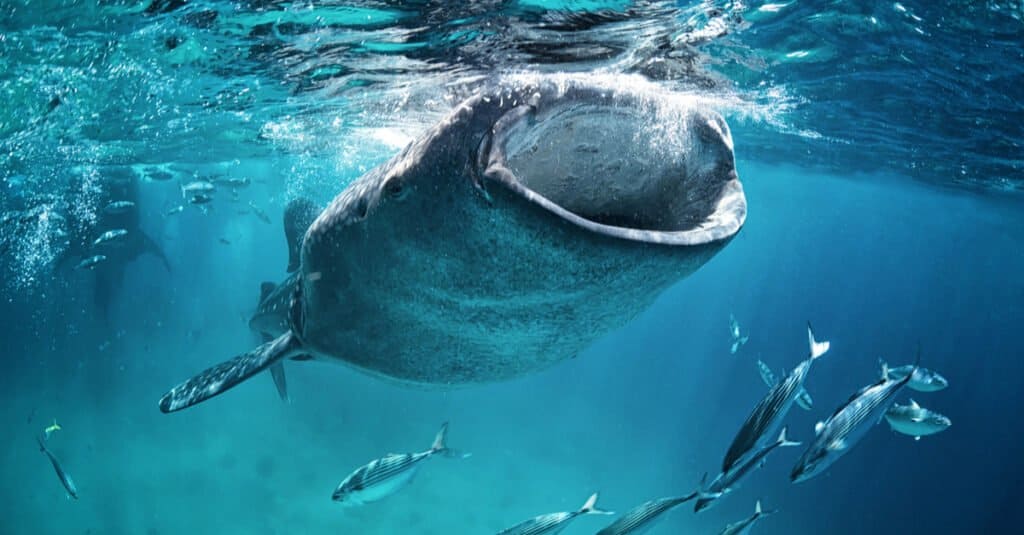
Whale sharks are not whales, they are a species of shark.
©Fata Morgana by Andrew Marriott/Shutterstock.com
With over 500 living species of sharks, the scientific name for this superorder is Selachimorpha. Even with four different orders extinct, the fish still manages to have quite a few variations. Some of these species have no anal fin, while others do. Everything from the positioning of the mouth to the length of their snout can differentiate between other species.
Some of the most notable types of sharks include:
- Great white shark: Perhaps the most popular and well-known, the Great White is the largest species in the ocean, and it can reach lengths of about 20 feet. Plus, these fish can reside in the ocean for 30 years, swimming along coastal waters.
- Cookiecutter Shark: The cookiecutter shark takes its name because it leaves a cookie-shaped bite hole in its predators. These sharks have the largest teeth of any shark species at any location. Like all sharks, it loses its teeth and grows new ones throughout its life.
- Ragged tooth shark: These sharks stand out for an interesting reason – it gulps air. Much like a mammal would, this species will hold onto the air in its stomach so that it can stay in the same place. Their dagger-like teeth are lined along two rows on both their top and bottom jaw, though they actually lose up to three teeth daily. Even with their ferocious appearance, they are fairly harmless if left alone.
- Bull shark: Primarily residing in freshwater areas, the bull shark will seek out shallow areas. They have special glands that provide them with the salt that their body needs, allowing them to journey where they need to go for food.
- Tiger shark: These sharks can grow as long as 18 feet, and they are pretty easy to identify with their vertical stripes and spots. They will live in both shallow and deep waters, and their jaws are powerful enough to break apart the shell of a sea turtle.
- Salmon shark: Salmon sharks can be very dangerous to humans. At about 6.5 feet long (at their shortest), they typically live in the northern region of the Pacific Ocean. They are able to regulate their own stomach temperature, though this feature is rare amongst sharks in general. They’re considered one of the fastest sharks in the world.
- Nurse Shark: These sharks don’t pose any threat to humans unless they are disturbed. In fact, many people swim right by these sharks without ever knowing they were there.
- Horn Shark: The horn shark moves by pushing itself along the bottom with its strong fins. This shark is very sensitive to light. It spends almost all its life hidden in crevices, shadows, or dark waters.
- Goblin Shark: The Goblin Shark, which is sometimes referred to as a living fossil, is a type of shark that is found in the deep sea. This unique-looking shark is easily identified by its long snout, protruding jaws, and semitranslucent skin. Goblin Sharks have been found in all three of the major oceans. Because they live so deep under the water, there are still a lot of unknowns about this creature.
- Greenland Shark: This shark has the longest lifespan of any vertebrate. The Greenland shark, called eqalussuaq by the Inuit people is famous for living to a great age. Biologists believe that this large, slow fish can live to be half a millennia old. Its longevity probably has something to do with the fact that it does everything slowly. It swims slowly. It reproduces slowly. It catches prey by sneaking up on them when they’re asleep and then attacking.
- Grey Reef Shark: Grey reef sharks are voracious marine predators that prefer shallow waters and are among the most common sharks found in coral reef habitats throughout the Indo-Pacific region.
- Basking Shark: These sharks tend to swim with their big mouth hanging wide open, which can be intimidating to divers who don’t know better.
- Hammerhead Shark: Hammerhead sharks are best known for their long, rectangular heads. They tend to swim at an angle to decrease drag and increase their swimming efficiency.
- Frilled Shark: Frilled Sharks got their name from the six rows of gills on their throat that looks like ruffled collars.
Sharks have lived for more than 450 million years, to discover some species of shark that went extinct give ‘11 Types of Shark that went Extinct‘ a read!
Different Types
- Great white shark
- Tiger shark
- Bull shark
- Blacktip Reef Shark
- Sand tiger shark
- Blue shark
- Silky shark
- Oceanic whitetip shark
- Great hammerhead
- Basking shark
- Blacktip shark
- Shortfin mako shark
- Caribbean reef shark
- Grey reef shark
- Lemon shark
- Whale shark
- Bluntnose sixgill shark
- Dusky shark
- Smooth hammerhead
- Nurse shark
- Spinner shark
- Galapagos shark
- Copper shark
- Leopard shark
- Pyjama shark
- Kitefin shark
- Blacknose shark
- Porbeagle
- Scalloped hammerhead
- Spiny dogfish
- Greenland shark
- Goblin shark
- Megamouth shark
- Cookiecutter shark
- Small-spotted catshark
- Brown shy shark
- Port Jackson shark
- Silvertip shark
- Sicklefin lemon shark
- Common thresher
- Zebra shark
- Whitetip reef shark
- Horn shark
- Longfin mako shark
- Bonnethead
- Sand devil
- Bigeye thresher
- Salmon shark
- Epaulette shark
- Squatina squatina
- Sandbar shark
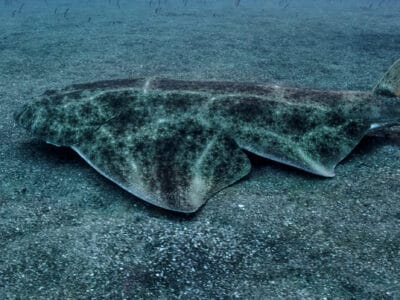
Angelshark
The angelshark’s range has contracted by more than 80% in the past century.

Bamboo Shark
Can reproduce asexually

Blacknose Shark
When threatened, Blacknose sharks raise their head, arch their back, and lower their pectoral fins.
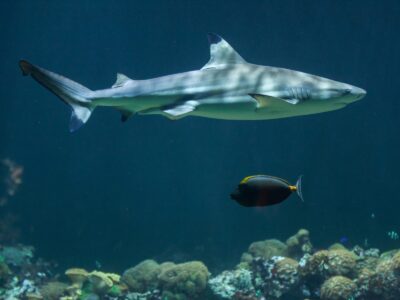
Blacktip Reef Shark
They move in and out of mangrove swamps with the tides.
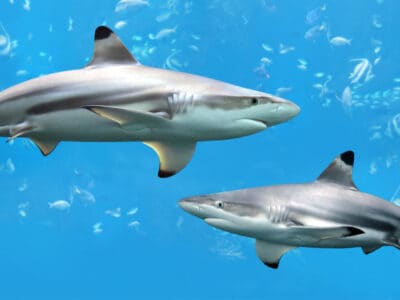
Blacktip Shark
One of the most commonly-encountered sharks
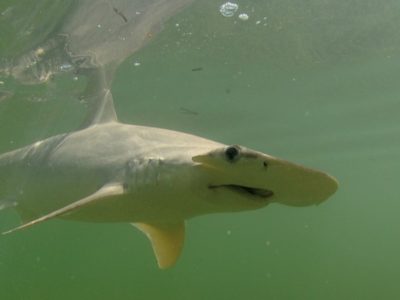
Bonnethead Shark
Bonnetheads are the only hammerhead sharks that use their pectoral fins to swim.

Bronze Whaler Shark
The Bronze Whaler Sharks only hunt in large groups.
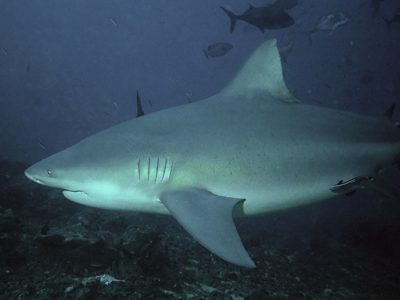
Bull Shark
Unpredictable and aggressive temperament!
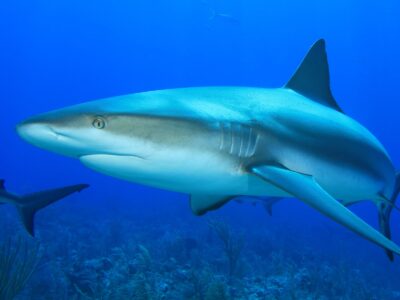
Caribbean Reef Shark
These sharks are a big part of ecotoursim in the Caribbean.

Cookiecutter Shark
The cookiecutter shark takes its name because it leaves a cookie-shaped bite hole in its prey.
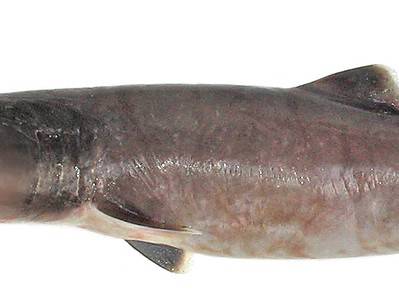
Crocodile Shark
Responsible for damaging fiber optic cables laid by AT&T in 1985
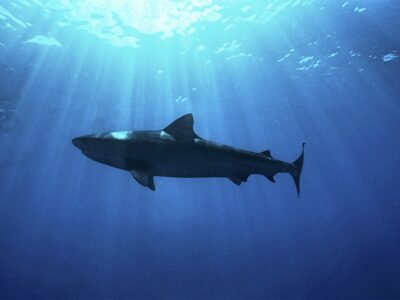
Dusky Shark
The Dusky Shark sometimes eats trash discarded by humans.

Frilled Shark
Frilled Sharks got their name from the six rows of gills on their throat that look like ruffled collars.
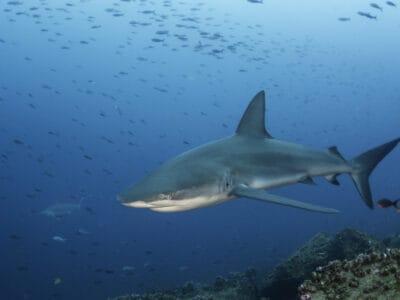
Galapagos Shark
Galapagos sharks are cannibalistic and sometimes eat their young, so the pups stay away from the adults in shallow water.

Goblin Shark
Goblin Sharks are called a living fossil because their family, Mitsukurinidae, can be traced back 125 million years.
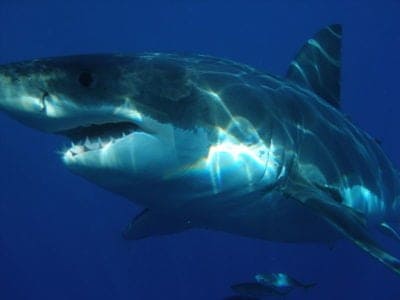
Great White Shark
Can grow to more than 8 meters long!

Greenland Shark
This shark has the longest lifespan of any vertebrate.

Grey Reef Shark
One of the most common shark species!

Hammerhead Shark
Found in coastal waters around the world!

Horn Shark
Endemic to the Californian coast!

Leopard Shark
Leopard Sharks have teeth with three points.

Megalodon
The largest shark to ever live!
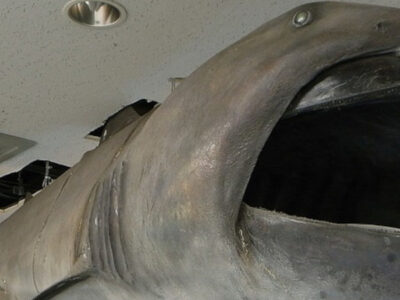
Megamouth Shark
Swims with its mouth open to capture prey
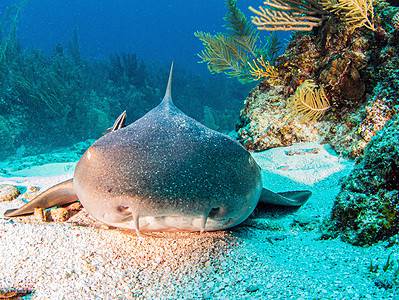
Nurse Shark
Commonly found in Central American waters!

Pacific Sleeper Shark
In 2015, a Pacific Sleeper Shark was filmed living underneath an active volcano near the Solomon Islands. This shark is able to survive in waters with very high temperatures and acidity!

Porbeagle Shark
The porbeagle is one of the few sharks that jumps out of the water

Pygmy Shark
Pygmy sharks underbelly glows to attract prey that swims beneath it.

Pyjama Shark
Pyjama Sharks like to swim in shallow inshore waters.
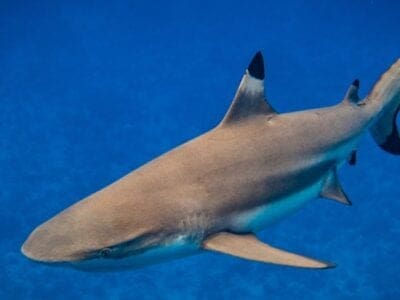
Reef Shark
Grey reef sharks can give birth without males

Salmon Shark
Salmon sharks are related to Great Whites.

Sand Tiger Shark
The sand tiger is the shark most commonly seen in aquariums.

Shortfin Mako Shark
Shortfin Mako sharks can jump 20 feet above the water!”
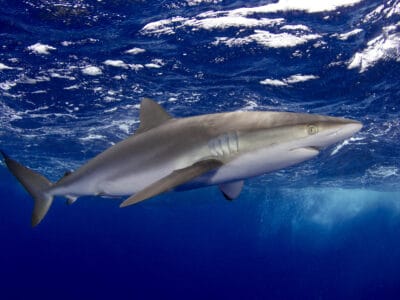
Silky Shark
Has an extremely acute sense of hearing
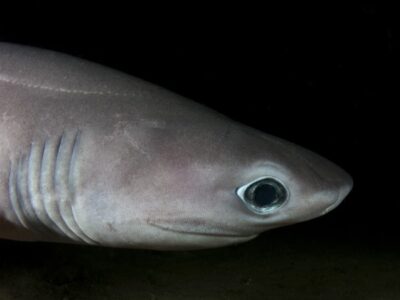
Sixgill shark
The sixgill shark has six pairs of gills instead of the normal five

Sleeper Shark
The Greenland shark is one of the longest living vertebrates in the world.

Spinner Shark
Can have up to 20 babies

Spiny Dogfish
Found in ocean waters worldwide!

Thresher Shark
Thresher Sharks have a distinctive, thresher-like tail.

Tiger Shark
The fourth biggest species of shark in the world!

Viper Shark (dogfish)
Most data on these fish is based on observations near Japan.
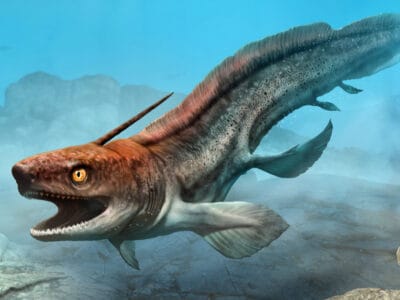
Xenacanthus
Smal eel-like ancient shark
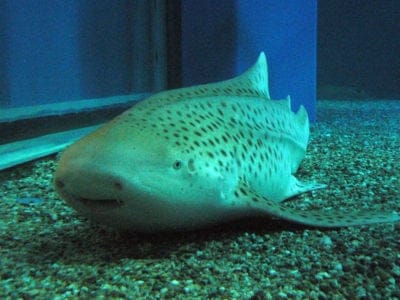
Zebra Shark
Can get to be 30 years old in the wild!
You can read more about the different types of sharks here.
Appearance
These fish have a cylindrical shape and tapered edges. This body structure allows them to smoothly sail through deep waters in search of their prey. However, the length of their body and even their snout can be different from species to species.
Sharks are usually 5.8 to 7 meters long – which is at least 3 times the height of the average human. While the smallest species are less than 20 centimeters long, the largest one is about 12 meters. Sharks usually have a body weight of around 1500 to 4000 pounds. However, some can also weigh about 5500 pounds. Sharks are an animal that never stops growing, so larger sharks are generally very old.
These fish are naturally colored to be able to camouflage and blend with their surroundings – typically to catch the prey easily. The dorsal side of their body is darker than the ventricle side. Therefore, when seen from above, the body of the shark would usually blend with the dark atmosphere of the ocean.
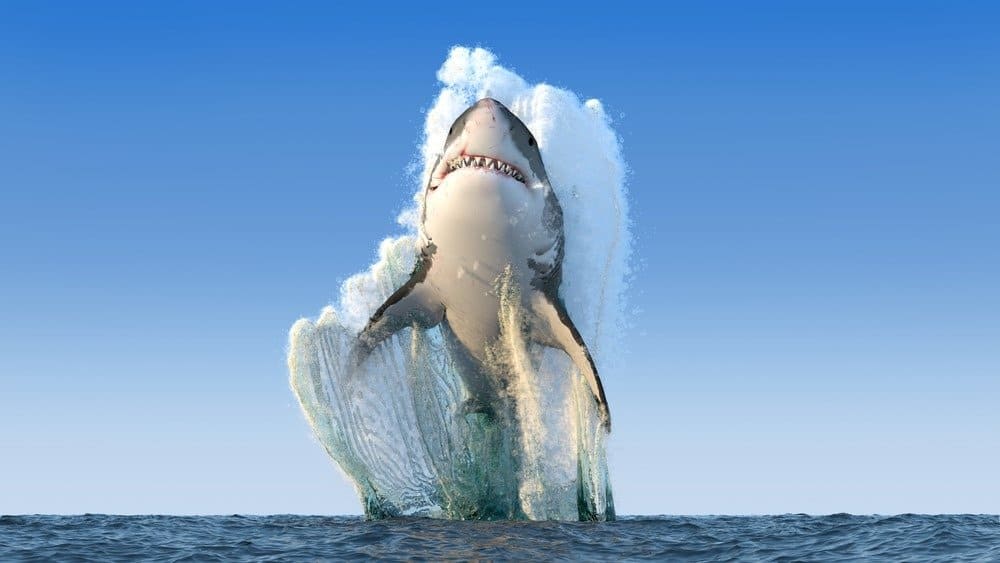
©Alexyz3d/Shutterstock.com
Distribution, Population, and Habitat

Bull sharks are one of the few species of shark that can survive in freshwater.
©Stefan Pircher/Shutterstock.com
Sharks, along with their sister group of rays have, over millions of years, adapted to living in a wide range of habitats. While some of them live in shallow and coastal regions, others live in deep waters. Some others are further found in the open oceans or the ocean floors.
Even though these large fishes are found in several places around the world, they are mostly and most commonly found in the USA and Australia. There are only a few species (i.e., the bull shark and the river shark) that live in freshwater areas, but the highest number are found in the waters of New South Wales in Australia. They can also be found in the Indian Ocean, near Brazil, and even as local as North Carolina.
According to experts, there are more than 400 living species of these fish around the world – all of which are divided into 14 to 30 different shark families.
Check out the most shark-infested waters in the world.
Predators and Prey
As big as these fish may be, most people believe that this fish has no natural predators, but they would be incorrect. Both killer whales and sperm whales will consume smaller shark breeds as their nourishment, but they consume their fair share of animals in the sea as well.
What Sharks Eat

Sharks have no qualms about consuming their relatives, as larger sharks will consume other species as well. All of them are carnivores, which means that they will only eat other animals as their nourishment. Most sharks enjoy a balanced diet of dolphins, seals, turtles, and even seagulls. They seek out other fish and sea mammals as well.
For a full analysis of what sharks eat make sure to read ‘What Do Sharks Eat? The Top 21 Foods in Their Diet.‘
What Eats Sharks
As stated above, these fish have the threat of other sharks coming after them as food. Apart from their own species, the amount of fat and protein that they offer makes them ideal for the diet of an orca whale or a sperm whale. In fact, these orcas, also known as killer whales, are apex predators, and even the largest sharks cannot hunt them.
Reproduction and Lifespan
These fish do not reproduce like the other fishes. They use internal reproduction as a method to produce babies, much in the same way that mammals do. The male has two organs that are attached to its anal fins for the purpose of reproduction.
When mating, the males insert one of them into the female’s cloaca. During the insertion, the sperm is transferred from the male to the female. The sperm then fertilizes the egg inside the female.
Though the exact amount might vary by species, this fish is famous for its long pregnancy, which lasts for an average of a year. However, some sharks have as little as a 5-month gestation period, while others may gestate for three long years.
The lifespan of sharks is about 20 to 30 years.
Fishing and Cooking
Most of these fishes are fished out for commercial purposes. They are cooked widely, especially in the United States. Due to their body weight, they are a good meat source for humans.
People love eating shark steaks which are prepared using a wide variety of spices and are later cooked in oil before being savored by several humans.
View all 293 animals that start with SShark FAQs (Frequently Asked Questions)
Where are sharks found?
While Sharks are found in several places around the world, they are most commonly found in the USA and Australia. There are several types of sharks including salmon sharks, tiger sharks, and bull sharks.
How many bones does a shark have?
Sharks do not have any bones at all.
Why do sharks attack humans?
Sharks usually attack humans when they are confused and/or curious about something.
What eats a shark?
Sharks are occasionally eaten by killer whales and sperm whales.
Is a shark a fish?
Yes, sharks are special types of fishes that have no bones in their bodies.
How fast can a shark swim?
The fastest sharks are known to swim at a speed of 25 to 35 mph.
Are Sharks herbivores, carnivores, or omnivores?
Sharks are Carnivores, meaning they eat other animals.
What Kingdom do Sharks belong to?
Sharks belong to the Kingdom Animalia.
What is an interesting fact about Sharks?
No Shark species has any bones in their bodies.
Who will win a fight between a Komodo dragon and a shark?
A shark would win a fight against a Komodo dragon, and it wouldn’t even be close.
Barracuda vs Shark: Who Would Win in a Fight?
A shark would win a fight against a barracuda. The apex predator has everything going, including size, speed, attack power, and defenses. The barracuda could potentially get the drop on the shark, but it’s very unlikely due to the latter’s superior senses.
The small profile of the barracuda lends itself to being on the receiving end of a devastating bite, too. With that in mind, it’s hard to imagine any scenario where a barracuda could do enough damage to a shark without the shark chomping on the barracuda.
Piranhas vs Shark: Who Would Win in a Fight?
A shark would beat piranhas in a fight.
We can break this fight down any number of ways, but the piranhas would need to act abnormally to even stand a chance of killing a shark. A shark merely has to use its power and speed to tear them apart, even if it takes a little while.
Thank you for reading! Have some feedback for us? Contact the AZ Animals editorial team.
Sources
- Ocean Adventures / Accessed December 15, 2020
- Sharks / Accessed December 15, 2020
- National Ocean Service / Accessed December 15, 2020
- Defenders of Wildlife / Accessed December 15, 2020
- Surfer Today / Accessed December 15, 2020
- Sharks Info / Accessed December 15, 2020
- Shark Research Institute / Accessed December 15, 2020
- Wikipedia / Accessed December 15, 2020
- NOAA Fisheries / Accessed December 15, 2020
- Britannica / Accessed December 15, 2020
- Mental Floss / Accessed December 15, 2020
- National Geographic / Accessed December 15, 2020

